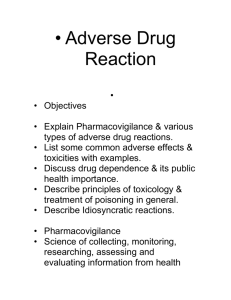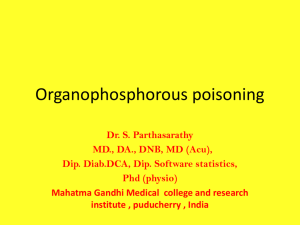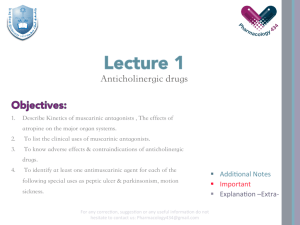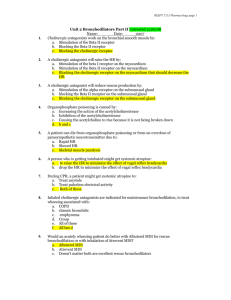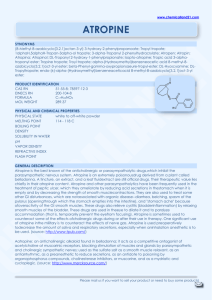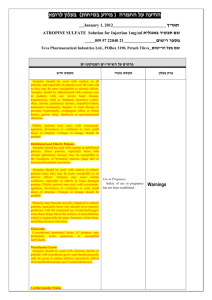I. Pharmacology and Actions
advertisement
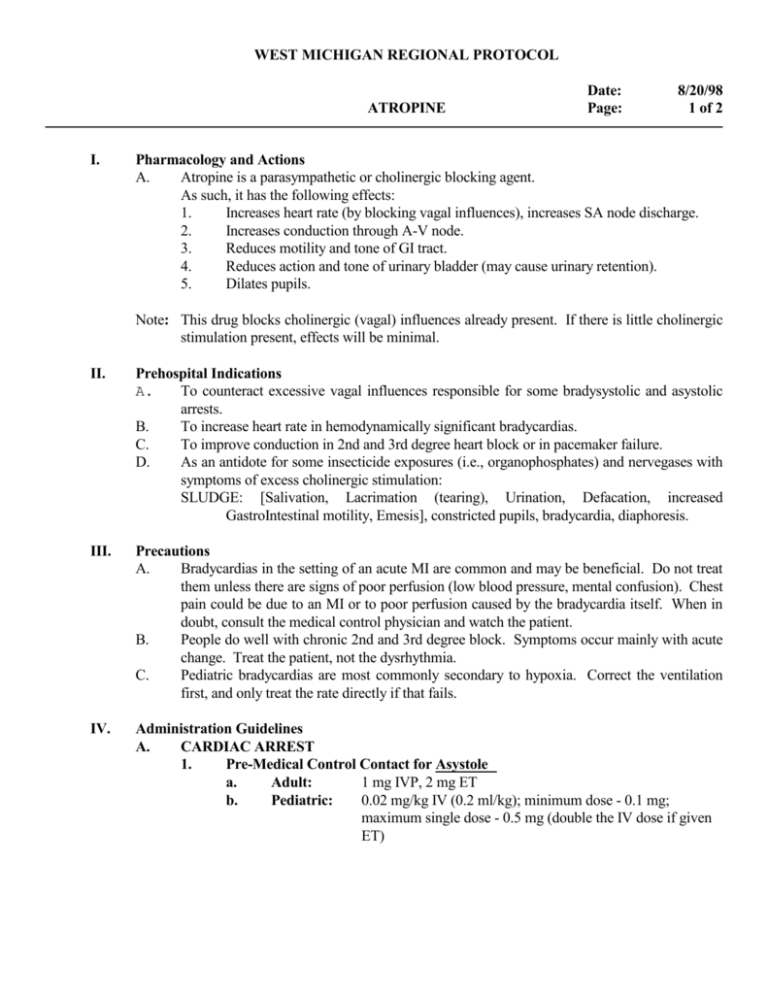
WEST MICHIGAN REGIONAL PROTOCOL ATROPINE I. Date: Page: 8/20/98 1 of 2 Pharmacology and Actions A. Atropine is a parasympathetic or cholinergic blocking agent. As such, it has the following effects: 1. Increases heart rate (by blocking vagal influences), increases SA node discharge. 2. Increases conduction through A-V node. 3. Reduces motility and tone of GI tract. 4. Reduces action and tone of urinary bladder (may cause urinary retention). 5. Dilates pupils. Note: This drug blocks cholinergic (vagal) influences already present. If there is little cholinergic stimulation present, effects will be minimal. II. Prehospital Indications A. To counteract excessive vagal influences responsible for some bradysystolic and asystolic arrests. B. To increase heart rate in hemodynamically significant bradycardias. C. To improve conduction in 2nd and 3rd degree heart block or in pacemaker failure. D. As an antidote for some insecticide exposures (i.e., organophosphates) and nervegases with symptoms of excess cholinergic stimulation: SLUDGE: [Salivation, Lacrimation (tearing), Urination, Defacation, increased GastroIntestinal motility, Emesis], constricted pupils, bradycardia, diaphoresis. III. Precautions A. Bradycardias in the setting of an acute MI are common and may be beneficial. Do not treat them unless there are signs of poor perfusion (low blood pressure, mental confusion). Chest pain could be due to an MI or to poor perfusion caused by the bradycardia itself. When in doubt, consult the medical control physician and watch the patient. B. People do well with chronic 2nd and 3rd degree block. Symptoms occur mainly with acute change. Treat the patient, not the dysrhythmia. C. Pediatric bradycardias are most commonly secondary to hypoxia. Correct the ventilation first, and only treat the rate directly if that fails. IV. Administration Guidelines A. CARDIAC ARREST 1. Pre-Medical Control Contact for Asystole a. Adult: 1 mg IVP, 2 mg ET b. Pediatric: 0.02 mg/kg IV (0.2 ml/kg); minimum dose - 0.1 mg; maximum single dose - 0.5 mg (double the IV dose if given ET) WEST MICHIGAN REGIONAL PROTOCOL ATROPINE 2. Date: Page: 8/20/98 2 of 2 Post Medical Control Contact for PEA if electrical complexes are < 60/min. a. Adult: 1 mg IVP, 2 mg ET b. Pediatric: 0.02 mg/kg IV: (0.2 ml/kg) minimum dose - 0.1 mg; max. single dose - 0.5 mg single dose. (Double the IV dose if given ET) B. SYMPTOMATIC BRADYCARDIA 1. Pre-Medical Control Contact a. Adult: 1 mg IVP, 2 mg ET Repeated if needed at 3-5 min. intervals to a total dose of 3 mg [0.04 mg/kg (stop at ventricular rate of 60)] 2. Post Medical Control Contact a. Pediatric: 0.02 mg/kg IVP: min. dose 0.1 mg; max. single dose 0.5 mg repeat in 5 minutes, max. dose 1 mg (If given ET, double the IV dose) NOTE: Given AFTER potential hypoxia has been corrected and Medical Control contact has been established. C. SYMPTOMATIC INSECTICIDE EXPOSURES 1. Post Medical Control Contact a. Contact medical control for dosage. Consider 2 mg every 5 minutes until "SLUDGE" symptoms improve or as directed. (Peds: 0.02mg/kg. min. 0.1mg, max. as ordered) V. Side Effects and Special Notes A. Atropine is likely to be less effective than external pacing in the presence of complete blocks with ventricular escape rhythms. B. Remember in cardiac arrest situations that Atropine dilates pupils. C. Atropine is used in asystolic cardiac arrests because evidence suggests that overwhelming vagal stimulation may be the cause of a small number of those arrests. D. Atropine is indicated in infants over 1 month of age for bradycardias not responding to oxygenation with ventilation assistance. VI. Utilization A. (II.C.5.a) B (II.C.5.b) C. (II.C.5.e.) D. (II.B.5.) ATROPINE 7/2/98 Ventricular Asystole Bradycardia/Heartblock Pulseless Electrical Activity Poisoning






